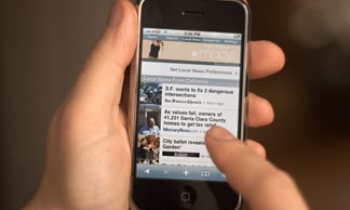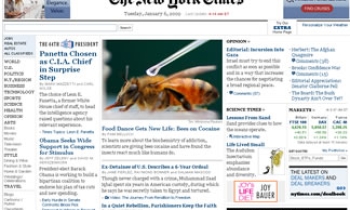The New York Times' new online subscription-based product, TimesSelect has netted 135,000 new paid subscribers since its launch on September 19. The total number of subscribers, which includes home-delivery readers who do not have to pay, is 270,000 subscribers since its introduction less than two months ago, the New York Times Company reported on Wednesday.

Though the company's move to put its most popular columnists behind a paywall had drawn a lot of criticism, more than 90 per cent of those who initially signed up for the 14-day free trial have become paying subscribers. In the week before it launched, when TimesSelect was priced at $39.95, more than 20,000 online-only subscribers signed up. Approximately half of those enrolled in the service are Times home-delivery subscribers, who receive access to TimesSelect as a benefit of their print subscription, while the other half are online-only subscribers.
At the Online News Assoicaiton's (ONA) convention last month, the New York Times chairman Arthur Sulzberger had said, "TimesSelect will create a robust stream of online income, and will be great for our readers. The prelim response is beyond our expectations and traffic is steady." Sulzberger had called it a tough decision for the company and asserted, "We had to build into our Web thinking which can sustain the kind of journalism we do. Advertising online right now is great, but as you know, it is cyclical. So we're building for that... information, in fact, does not yearn to be free."
TimesSelect is regularly priced at $49.95 annually or $7.95 monthly and provides exclusive online access to the op-ed columnists and select business, metro and sports columnists of the New York Times and the International Herald Tribune. It also features seamless access to the NYT's extensive archives, previews of articles from Sunday's Times, multimedia packages and new tools for tracking and organising news and information customised by users. Fourteen-day free trials continue to be available.
"We're delighted with the enthusiastic response to TimesSelect," said Martin Nisenholtz, senior vice president, digital operations, the New York Times Company. "Clearly we've put together a product that appeals to a wide range of readers. The feedback from users has been very positive, particularly about interaction with columnists, usage of new tools and access to The Times's archives."
"We're committed to making our world-class journalism available across all platforms," said Scott Heekin-Canedy, president, the New York Times. "TimesSelect is another new and innovative way for readers to interact with the Times."

Most of NYTimes.com remains free to all visitors. In September NYTimes.com achieved a record traffic of 21.3 million unique visitors worldwide, a 49 per cent increase from September 2004, principally as a result of hurricane coverage as well as site improvements. NYTimes.com generated 561 million page views, up 17 per cent year over year. Last month NYTimes.com also received three awards from the Online News Association (ONA), including the top prize for general excellence among large sites. The New York Times was honoured for its dedication to online excellence and cited as "the gold standard for online journalism."
Associated Press: Newspapers are facing long-term declines in their paid circulation, and more and more advertising dollars are moving from traditional print outlets to the Internet. The Times and other newspaper publishers have also been reporting higher revenues from online advertising at their own sites. So far the Wall Street Journal (WSJ), published by Dow Jones & Co, has had the most success in convincing users to pay for access to online editions. WSJ has 764,000 subscribers.
The balancing act would have been a dificult one as Jay Rosen wrote in September: " If one faction wanted to go the Wall Street Journal's pay wall route, and another wanted to remain free like the Post, then TimesSelect is not a hypothesis for how to succeed on the Web, but just a mid-point between competing theories. That alone is reason to worry."
Editor & Publisher quoted Nicholas Kristof, an op-ed columnist whose work appears twice weekly, "I'm sad to lose an awful lot of readers, and a lot of readers in places like China and Pakistan who don't have credit cards or the ability to sign up. I want to be read, and this makes it much harder. But that is tempered by a concern that we come up with a business model to pay for my trips to Africa."
Thomas Friedman, another Op-Ed columnist who has a lot of foreign readership, admitted to the same publication about being torn on the subject: "I want my newspaper to have a successful business platform. But the other side of me says that I have a lot of international readers in places like Egypt, where $50 could be their college tuition for a while."
So far, till as much as numbers go, TimesSelect has not been doing too bad.









